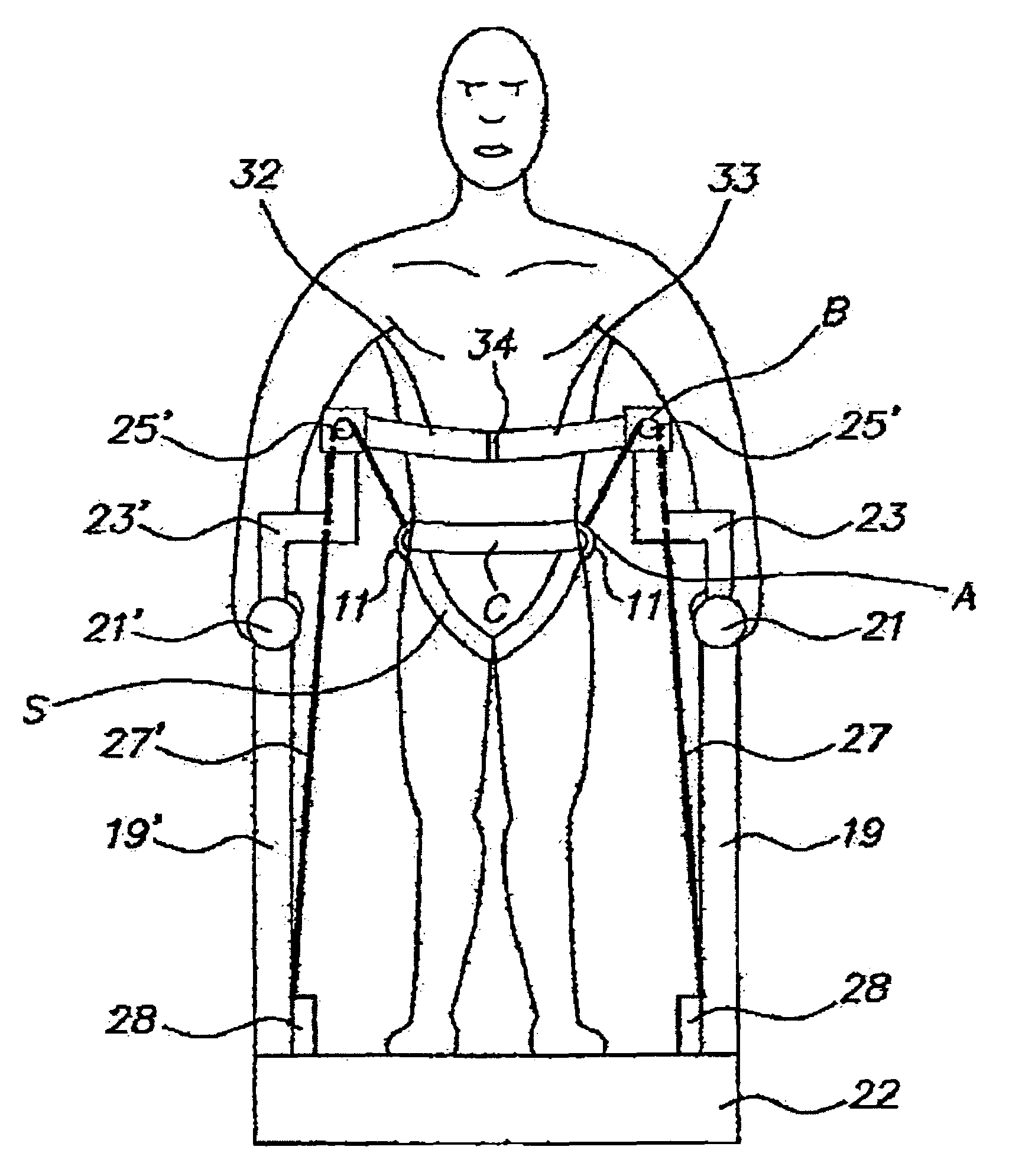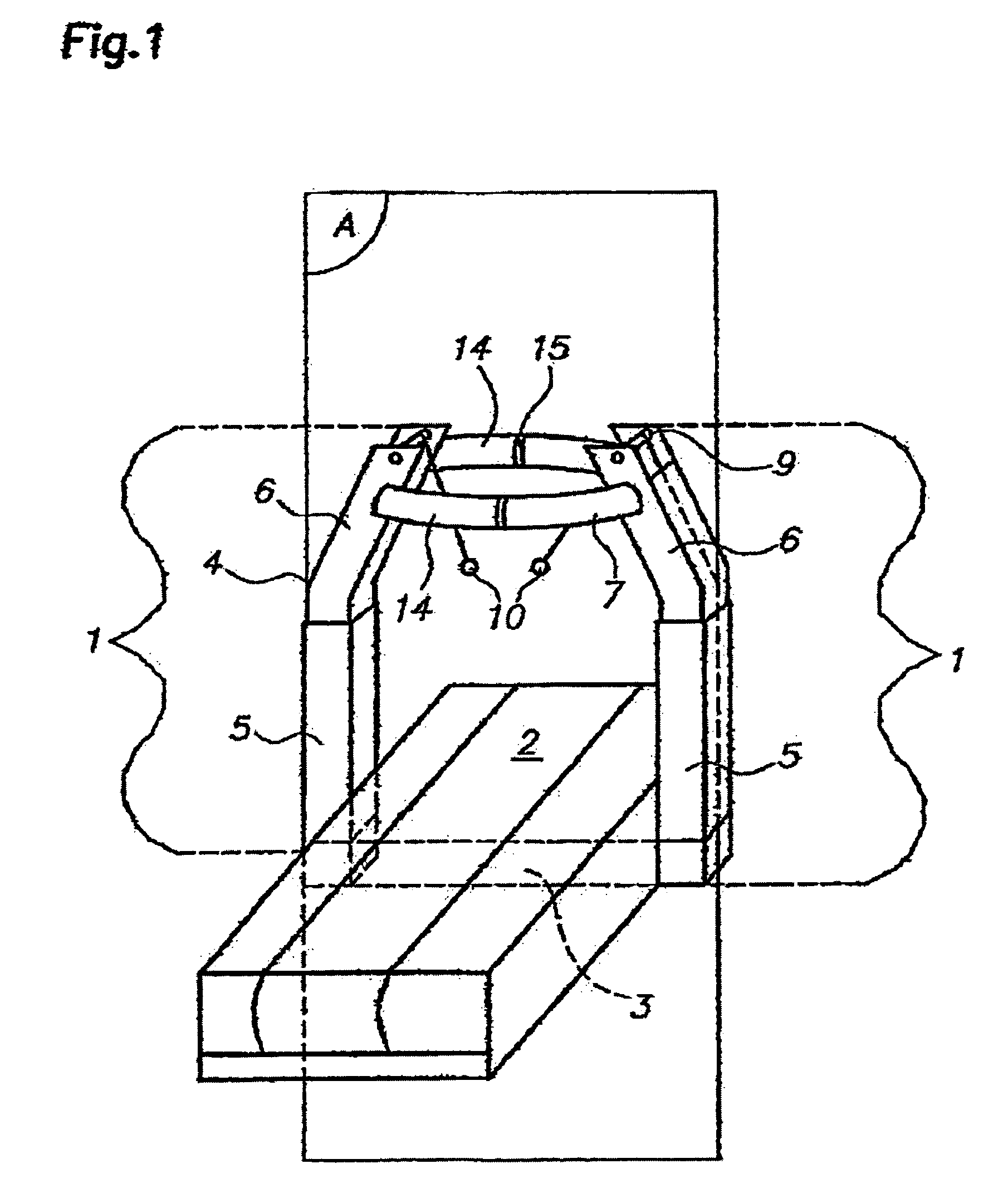Device for the reeducation of motory deficiencies, particularly deficiencies when walking, in patients
a technology for patients and wheelchairs, applied in the field of wheelchairs for patients, can solve the problems of high cost, difficult to maintain, and bulky devices currently in existence, and achieve the effect of ensuring safety from falling
- Summary
- Abstract
- Description
- Claims
- Application Information
AI Technical Summary
Benefits of technology
Problems solved by technology
Method used
Image
Examples
Embodiment Construction
[0058]In the example of FIG. 1, the device comprises two lateral posts 1 in a parallelepiped section located on either side of a treadmill 2 possibly linked by a horizontal piece 3 going under the treadmill, this piece 3 being able to extend or retract in order to allow adjustment of the gap between the two posts closest to the user's trunk.
[0059]Moreover, these posts 1 each comprise a bend 4 in such a way as to bring their ends closer together and thus to adjust the size of the gap between said posts. It should be noted that each of the posts may comprise at least two mobile parts in vertical translation in relation to one another, one vertical 5 and the other bent 6, and having related attachment means at different levels in order to account for the height of the user such that the upper end of the posts is at the level of the navel.
[0060]Inside each of the posts is a strap 7 of which one of the ends is placed in a reel 8 located at the base of the post and of which the other extr...
PUM
 Login to View More
Login to View More Abstract
Description
Claims
Application Information
 Login to View More
Login to View More - R&D
- Intellectual Property
- Life Sciences
- Materials
- Tech Scout
- Unparalleled Data Quality
- Higher Quality Content
- 60% Fewer Hallucinations
Browse by: Latest US Patents, China's latest patents, Technical Efficacy Thesaurus, Application Domain, Technology Topic, Popular Technical Reports.
© 2025 PatSnap. All rights reserved.Legal|Privacy policy|Modern Slavery Act Transparency Statement|Sitemap|About US| Contact US: help@patsnap.com



